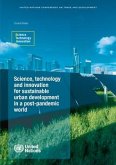The book discusses the policies and strategies for Science and Technology (S&T) and Innovation capability building put up by the Maghreb states (Algeria, Tunisia, Morocco) in the last three decades. The application of structural adjustment programmes (SAPs) in recent years, the opening up of their economies and liberalisation of trade have confronted their firms with largely innovation-based competition and attempts to reduce the impact of this are far from effective, particularly under the era of knowledge economy and sustainability requirements. The work is articulated around three major themes: the difficult path to S&T capacity building, the attempts to put up National Innovation Systems (NIS) and the prospects of a more innovation-driven growth at the territorial level, notably through intermediate institutions and science and technology poles. While pointing out the difficulties of building NIS, the book examines how the context of an innovation-driven competition put local firms, especially SMEs, in a difficult position. It notes that the universities, which are prone to internal politics and rent-seeking, are not producing the necessary human capital. The knowledge economy era challenges raise some hopes for better access to innovation and knowledge assets in the world while at the territorial level new innovation dynamics are taking place. Based on extensive research and consultancy work done on the analysis of policies in the Maghreb, the book also raises the issue of the neighborhood of the European Union and argues that unless Europe integrates the Maghreb into a real neighborhood Innovation System, the prospects for innovation take-off in the region are limited.
Bitte wählen Sie Ihr Anliegen aus.
Rechnungen
Retourenschein anfordern
Bestellstatus
Storno









